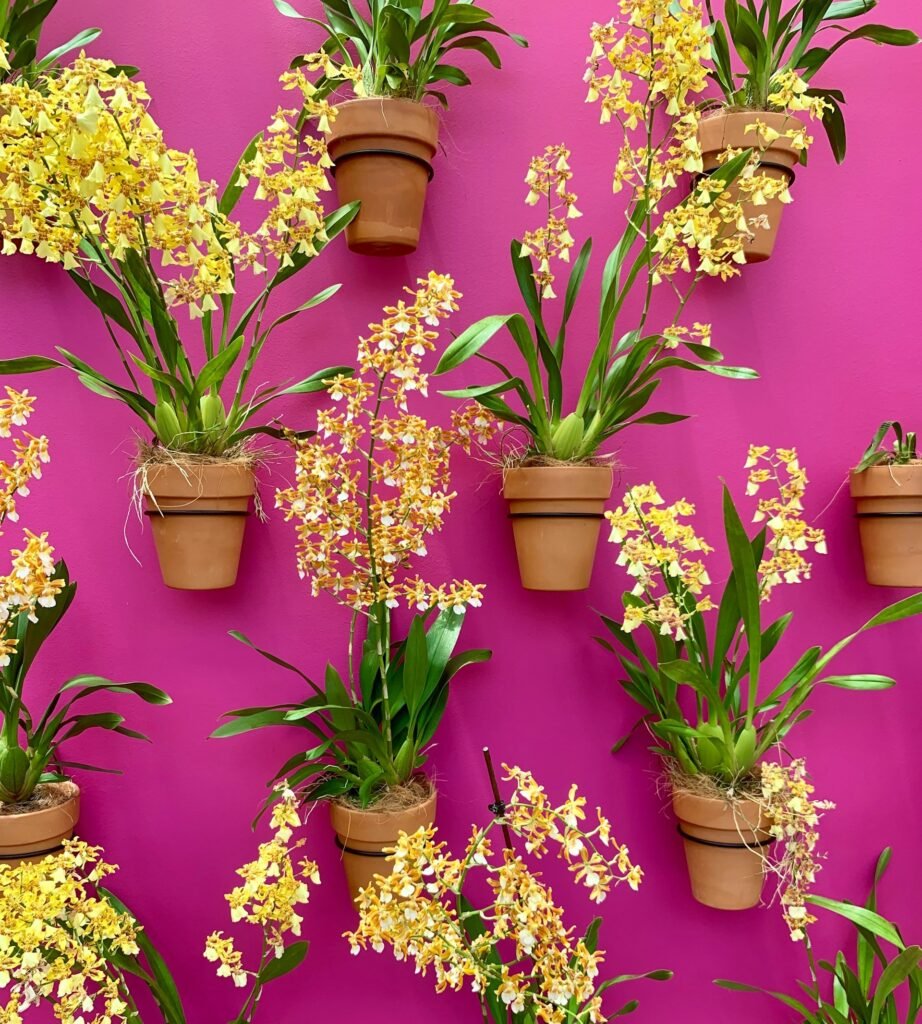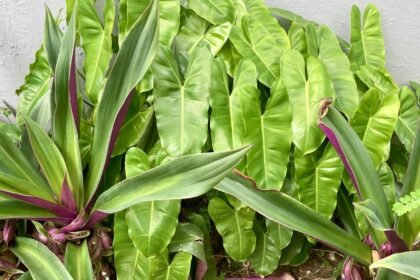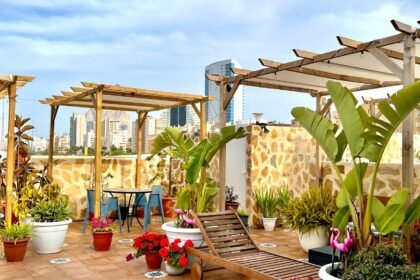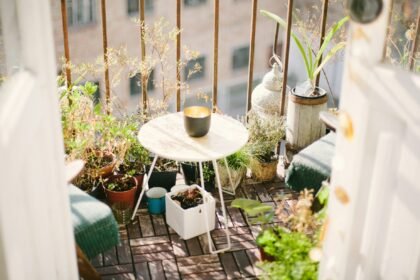Vertical gardening is an innovative approach that allows plants to be cultivated in a way that utilizes vertical space, which is particularly beneficial in urban environments where land is usually limited. This gardening technique has become significantly more popular in recent years, as people look for creative solutions to maximize small spaces. The concept of vertical gardens is not only practical but also enhances the visual appeal of homes and communities, transforming bland surfaces into vibrant green canvases.
One of the attractive benefits of vertical gardens is their ability to improve air quality. Plants naturally filter pollutants and carbon dioxide from the atmosphere, releasing oxygen and contributing to a healthier environment. By incorporating vertical gardens into residential or commercial properties, people play an active role in combating urban air pollution. Additionally, gardening enthusiasts enjoy the fact that vertical gardens requires less soil than traditional gardening methods, making them more ideal for limited spaces.
The roots of vertical gardening can be traced back to the favela gardens of Brazil, where creative gardening solutions emerged in resource-constrained environments. These gardens showcase a multitude of plants, often integrated into the architecture of the community, embodying the resilience and ingenuity of their creators. The vibrant visuals and strong sense of community found in favela gardens inspire modern urban gardening practices, encouraging residents to embrace the beauty of biodiversity even in confined areas. As urban gardening continues to evolve, vertical gardens are poised to lead the way in transforming our living spaces into lush, productive landscapes that reflect both personal expression and ecological awareness.
What Makes Favela Gardens Unique
Favela gardens are distinctive spaces that reflect the vibrant culture and community spirit of their surroundings. These gardens are characterized by their organic and colorful design, showcasing a variety of plants that thrive despite the often challenging urban environments in which they are situated. The unique aesthetic of favela gardens comes from the thoughtful selection of plants and their arrangement, leading to captivating displays that can transform even the smallest available space into a lush green sanctuary. Each garden often becomes a palette of colors, with flowers and foliage harmoniously blending in a way that celebrates the local flora.
One of the most significant aspects of favela gardens is the community involvement that shapes their existence. Local residents collaborate to cultivate these gardens, sharing not only the labor but also skills and knowledge about which plants are best suited for their environment. This community aspect fosters a sense of ownership and pride among participants, encouraging social interactions and collaborative efforts. As these gardens flourish, they become more than just green spaces; they serve as gathering spots for residents, enhancing the community’s social fabric.
Furthermore, favela gardens play a crucial role in promoting sustainability within the community. By embracing vertical gardening techniques and other innovative growing methods, they maximize limited space while minimizing their environmental footprint. This approach allows residents to grow a wide range of edible and ornamental plants, supporting both food security and biodiversity. The diverse plant choices, from herbs and vegetables to native flowers, exemplify the resourcefulness of these gardeners. Thus, favela gardens embody a sustainable lifestyle, blending aesthetics with an ecological consciousness that is essential for urban living.
Choosing the Right Location for Your Vertical Garden
When embarking on the journey of DIY vertical gardening, one of the fundamental steps is selecting the right location for your vertical garden. The chosen spot will significantly influence the health and growth of your plants, making it essential to consider several factors. Sunlight exposure is at the forefront; most plants thrive in areas that receive ample sunlight. Ideally, your vertical garden should be situated where it can collect at least six hours of direct sunlight per day. If this is not possible, explore plants that tolerate partial shade, allowing for a diversified selection.
Next, consider the surfaces of the walls where your vertical garden will be mounted. A sturdy, well-ventilated wall is paramount for supporting the weight of the plants, soil, and watering systems. Ideally, choose an area with a wall that is protected from harsh weather conditions, such as strong winds or heavy rainfall, to maintain the integrity of the garden. Additionally, assess the material of the wall; surfaces such as brick or concrete may better support your gardening efforts compared to wooden walls that may decay over time.
Proximity to water sources is another essential aspect when selecting a location for your vertical garden. Establishing easy access to water will facilitate routine maintenance and ensure that your plants receive adequate hydration. Consider installing a drip irrigation system for efficiency, which can easily be managed even in tight vertical spaces.
Lastly, evaluating the micro-climate of your selected location is crucial. Observe temperature variations, humidity levels, and wind patterns, as these factors significantly affect plant health. Conducting this environmental assessment ensures that your vertical gardening space will flourish, allowing you to enjoy a vibrant, lush garden right at home.
Materials You’ll Need for Building Your Vertical Garden
Creating a vertical garden requires careful selection of materials that not only support the growth of plants but also align with the principles of sustainability inherent in favela gardening. Below is a list of essential materials and tools, along with suggestions for sourcing affordable options for DIY gardening enthusiasts.
First and foremost, you will need a sturdy frame to support your vertical garden. This can be made from wood, metal, or recycled materials such as plastic crates or old pallets. Reusing discarded materials not only saves costs but also contributes to a more sustainable approach. A wooden frame can be treated to withstand the elements if your vertical garden is outdoors.
Next, consider using containers or pots for planting. While traditional pots are available, exploring alternatives like repurposed bottles, tin cans, or even fabric pockets can save money and provide a unique aesthetic. If you opt for traditional containers, make sure they have proper drainage to prevent water accumulation.
For soil, a high-quality potting mix is essential to ensure your plants thrive. Look for organic options if feasible, or consider creating a homemade mix with compost, peat moss, and perlite. Compost can often be sourced from local gardens or municipal composting facilities, making it both a cost-effective and environmentally friendly choice.
Watering is a crucial component of any garden, and for a vertical garden, you may need a drip irrigation system or simple watering cans. A porous landscape fabric can also be used to retain moisture while promoting drainage. Additionally, securing climbing plants will require some form of support, such as trellis panels or ropes, which can be easily sourced from home improvement stores.
Building a vertical garden is an affordable and rewarding DIY project. By selecting sustainable and recycled materials, you not only enhance your home with greenery but also pay homage to the resourcefulness seen in favela gardening. With the right tools and materials, you can create a thriving vertical oasis that reflects your own style.

Step-by-Step Guide to Building Your Vertical Garden
Creating your own vertical garden is an enriching DIY gardening project that can transform your living space while embracing the charm of favela gardens. The process involves careful planning and execution, allowing you to customize your garden according to your preferences and available space. Here’s a comprehensive step-by-step guide to help you through the construction of your vertical garden.
- Assess the available space in your home.
- Look for areas that receive adequate sunlight, as most plants thrive in bright conditions. Vertical gardening can be done on balconies, walls, or even indoors, as long as light is sufficient. Next, decide on the plants you wish to include. Selecting a mix of herbs, flowers, and foliage can enhance the aesthetic appeal while catering to various gardening needs.
- Once you have chosen your plants, it’s time to design your vertical garden layout.
- You can opt for a simple grid configuration, which is easy to construct, or a more intricate design mimicking the staggered look of favela gardens. Using materials such as wooden pallets, wall-mounted planters, or even repurposed containers can make building your vertical garden both sustainable and visually captivating.
- After finalizing your design, gather the necessary materials.
- You will need a sturdy support structure, soil, drainage materials, and appropriate tools like screws and brackets. Begin by constructing the framework, ensuring it is secure and capable of holding the weight of the soil and plants. Attach your containers or planters to the structure, prioritizing good spacing to allow plants to grow without hindrance.
- Finally, fill your containers with nutrient-rich soil, plant your chosen greenery, and ensure they are adequately watered.
- Regular maintenance, including watering, pruning, and monitoring for pests, will keep your vertical garden thriving. With these steps, you will create a beautiful, space-efficient vertical garden, bringing a touch of favela charm into your home.
SHOP VERSATILE PLANTERS WITH COCO LINER

Plant Selection: Choosing the Right Greenery
When embarking on a vertical gardening project, particularly one inspired by favela gardens, selecting the right plants is crucial to achieving a successful, sustainable, and aesthetically pleasing outcome. Favela gardens typically feature a diverse array of plants, and understanding which varieties thrive in vertical setups is essential for maximizing space and utility.
Consider incorporating herbs such as basil, mint, and thyme. These plants not only enhance the visual appeal of your vertical garden but also offer practical culinary benefits. Herbs generally require less space and can flourish in smaller containers, making them ideal candidates for a DIY vertical gardening project. Additionally, their fragrance can add another layer of charm to your home environment.
In terms of flowering plants, options like nasturtiums and pansies can infuse bright colors and beauty into your vertical garden. Both are hardy and can be easily trained to climb or spill over edges, adding dimensionality to your design. Moreover, many flowering plants can attract pollinators, further enhancing the ecological value of your garden.
For those interested in vegetables, climbing varieties such as pole beans or cherry tomatoes can be excellent choices. These plants can utilize the vertical space effectively and yield a bountiful harvest. When choosing vegetables, it is essential to ensure that they receive adequate sunlight and water, especially since vertical gardens may have varying exposure depending on their position in your home.
Consider factors such as temperature, humidity, and the specific care needs of each plant type. Regular maintenance—such as pruning and watering—will play a vital role in the long-term success of your vertical gardening initiative. By selecting the right combination of herbs, flowers, and vegetables, you can create a thriving green space that reflects the charm and vibrancy of favela gardens while serving practical purposes in your daily life.
Maintaining Your Vertical Gardens
Maintaining a vertical garden requires consistent attention and a strategic approach to ensure that the plants thrive and the aesthetic remains intact. One of the primary components of maintaining a successful vertical garden is the watering technique employed. Due to the vertical structure, water may not always reach the roots effectively. Drip irrigation systems are particularly effective for vertical gardening as they deliver water directly to the base of plants, ensuring that each species receives the appropriate moisture level. Regularly checking the moisture content and adjusting the watering frequency based on the season and plant type is crucial for optimal growth.
Fertilization is another vital aspect of vertical garden maintenance. As plants grow in densely populated areas, they can deplete the soil of essential nutrients. Implementing an organic fertilization schedule, perhaps every four to six weeks, can help replenish these nutrients. Liquid fertilizers are often easier to apply in vertical gardens and ensure even distribution across the plant roots. Utilizing compost teas or slow-release organic fertilizers can also promote sustainable growth while maintaining the health of your vertical gardening ecosystem.
Pest control methods appropriate for vertical gardens should focus on prevention and natural solutions. Regular monitoring for signs of pests is crucial, as the compact nature of vertical gardening can lead to rapid pest infestations. Introducing beneficial insects, such as ladybugs or using neem oil sprays, can help keep pests at bay. Additionally, fostering plant diversity can create a more resilient garden environment, similar to the communities found in favela gardens where mutual support plays a vital role in sustenance. Engaging with your vertical garden daily not only strengthens the bond with your plants but also transforms garden maintenance into a fulfilling aspect of your life.
Vertical Gardens – Combining Community and Sustainability
Gardening transcends individual efforts, evolving into a communal activity that strengthens bonds while fostering sustainable practices reflective of the cherished favela gardens. Much like the vibrant communities in Brazil’s informal settlements, where gardening serves not only as a method for cultivating food but also as a means of building relationships, individuals can emulate this sense of togetherness in their own vertical gardening passions. Involving family, friends, or neighbors in DIY gardening efforts creates an enriching environment where shared learning and collaboration thrive.
To encourage collective participation, one could initiate a community gardening project, transforming an underutilized space into a flourishing vertical garden. Consider hosting workshops where people come together to design and build their own vertical garden structures using recycled materials. The act of gardening together nurtures a spirit of camaraderie, allowing participants to learn from one another while developing essential skills in sustainable gardening practices. Incorporating local plants not only helps the environment, but it also sustains the local ecosystem, echoing the practices seen in favela gardens, where biodiversity plays a critical role.
Furthermore, employing sustainable practices in vertical gardening can amplify the community impact. Community members may share resources, seeds, and knowledge, reducing waste and promoting a circular economy. Simple steps, such as using organic compost or creating rainwater harvesting systems, can enhance the sustainability of these gardens, leading to healthier plants and a healthier environment. By embracing these collective gardening efforts, individuals cultivate not only their gardens but a robust sense of community—an essential element in creating lasting connections and promoting environmental stewardship through enjoyable DIY gardening projects.

Embracing Vertical Gardens with a Touch of Brazil
In urban areas, the concept of gardening may often seem limited due to space constraints. However, vertical gardening presents an innovative solution, allowing individuals to cultivate lush, vibrant spaces even in the most compact environments. Drawing inspiration from the favela gardens of Brazil, which exemplify resilience, creativity, and community spirit, individuals can transform their living areas into green havens.
By embracing DIY vertical gardening techniques, urban dwellers can not only beautify their homes but also reap numerous ecological benefits. Vertical gardens promote improved air quality, support biodiversity by attracting various forms of wildlife, and play a significant role in reducing urban heat through the natural cooling effect of plants. This method of gardening encourages a more sustainable lifestyle, as it often requires less water and can utilize recycled materials for frame construction, aligning with eco-friendly practices that have become increasingly important in today’s world.
Vertical gardening allows for a level of creativity that can greatly enhance one’s living space. Whether opting for a simple wall-mounted planter or an elaborate tiered system, the possibilities are vast. This DIY approach not only fosters a personal connection to nature but can also create an inviting atmosphere that reflects the vivacious spirit of Brazilian favela gardens. Projects like this can serve as opportunities for individuals to engage with their community, share resources, and even collaborate on urban greening initiatives.
As you embark on this journey, consider sharing your unique vertical gardening experiences and ideas with others. Join community forums, participate in local gardening events, and nurture an environment where creativity and sustainability thrive. In doing so, you will not only contribute to the beautification of your surroundings but also promote the values of resilience and community found in the heart of Brazil’s unique urban garden culture.




